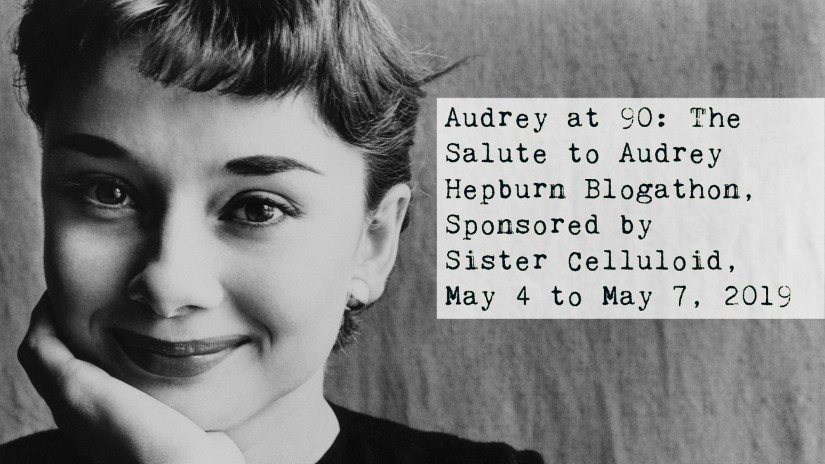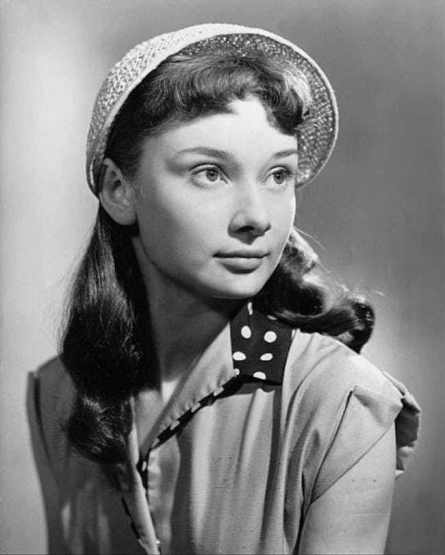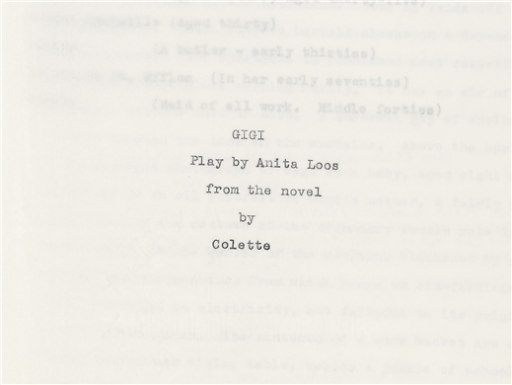Audrey Hepburn had never set out to be Audrey Hepburn. The girl with the perfect smile, the mellifluous voice that spellbound millions. She had never wanted to be an actress. She had wanted to be a ballerina. Her love for ballet was one that was all consuming, she became a courier during WWII for the Dutch Resistance while in small, soft ballet shoes. After the war she went to study under one of the greatest ballet instructors of the twentieth century, Dame Marie Rambert. Despite her dedication, which bordered on the extreme, Audrey was not able to become a Prima Ballerina as she so desired. Her height, her health and the sacrifices she had made during the War made it impossible.
But at Rambert’s suggestion, Audrey sought out theatre work. She was not entirely satisfied with this, but she soon found success in musical reviews such as High Button Shoes (1947) and Sauce Piquant (1950). But Audrey soon caught the attention of a producer from Associated British Picture Corporation (APA), and distinguished director, Thorold Dickinson. Audrey signed a three picture deal with APA, and in 1951 played minor roles in such films as Wild Oats and The Lavender Hill Mob. Although she was not consistently credited in her early films, there was something about her that attracted the attention of audiences, as she had in musical reviews. There was something ethereal about her, a brightness, a glorious openness around the mouth and eyes, with a tall, slim figure that somehow accentuated her elegance, her ability to almost glide through scenes.
It was this unique quality that meant Dickinson fought for her casting in The Secret People (1952), and was enthusiastically supported by the film’s Italian star, Valentina Cortese, despite the initially firm dismissal of APA executives. Her appearance in this film was particularly highlighted because it featured ballet sequences in which Audrey shone. This bore some similarity to her days in Nazi occupied Holland, where she would dance for audiences who could not applause, but who marvelled at her beauty and grace all the same.
And then Colette, the famous author of the Claudine books, saw Audrey during the shooting of a French-English co-production entitled Monte Carlo Baby (1952). Audrey was splashing about in a fountain, her dulcet laugh carefree and natural as it would always be in her later films. Colette was instantly taken with her natural approach, her unusual beauty and her lovely nature. Once again Audrey was not first choice for the role, but Colette insisted and Audrey was cast despite the anxiety of all involved in the play. Rehearsals went abysmally, and Audrey suffered great emotional distress due to the lack of support and praise she received from her costars and the crew.
But Audrey owed much of her early film and stage success to two veterans: Felix Aylmer, who worked with everyone from Laurence Olivier and Peter 0’Toole to Richard Burton, and in many difference genres, influencing many future British actors with his perfect elocution and distinctive manner. He would teach Audrey how to speak in a way that was appropriate for film acting, which accentuated her already marvellously unique voice which divinely combined different European tones. The other was Cathleen Nesbitt, who like Aylmer had a long career on film and stage, and would leave an indelible mark on audiences with her portrayal of the beloved Janou in An Affair to Remember. Aylmer and Nesbitt both taught Audrey how to move and speak properly on film and on stage. Audrey had never had any formal training in either style of acting, and especially struggled with how to move and project her voice on stage. Under Nesbitt’s guidance she began to understand who Gigi was, how to combine her natural talent with the right approach to stage acting. Despite their lack of faith, the producers of Gigi came to realise that Colette and Nesbitt had both seen in Audrey what would later make her a star: her natural ability combined with her willingness to learn and self improve.
Audrey further proved both women right when the notices for the show focused on her performance, how beautiful she was, how perfect her movement on stage appeared and how incomparable she was as Gigi, that girl who slowly becomes a woman. Through the role of Gigi, it seemed that Audrey underwent such a process, too. She went from a dancer who knew little about acting, to a performer of a wonderfully unique style. Dame Rambert had been correct many years before when she had told Audrey she was born to be an entertainer. But it was not only destiny that meant Audrey would become a legend of the silver screen, but her incredible capacity for hard work. While many seem to have the impression that Audrey rose to fame on a nigh an incline, it in fact took her many trials and tribulations to become the enduring star who has had an incalculable influence on popular culture. For Audrey, there was no such thing as resting on ones laurels.
And then along came a film that had seemed impossible to make. One that featured the perfect haircut, eating ice cream on ancient steps and one of the most poignant and remarkable endings in the history of romantic comedies, as well as a costar who saw, like so many before him, that this girl with the elfin eyes and the stunning smile was meant to be a star. And the rest, as they say, is Hepburnstory.
I would like to thank Adam Roche, the incredibly talented producer, writer and presenter of the Attaboy Clarence and The Secret History of Hollywood Podcasts, for allowing me to use his spectacular podcast series about Audrey’s early life and career, entitled Audrey: The Girl Before the Girl, as source material. I cannot recommend Adam’s podcast enough, and if you are a fan of Audrey’s (if you aren’t, why are you reading this post?) then I strongly suggest you become a Patron of Adam’s shows so you can listen to it.
This is my first contribution for the Audrey at 90: The Salute to Audrey Hepburn Blogathon hosted by Sister Celluloid. Please visit her blog for more information and to read everyone else’s contributions.


























Love it! Great piece.
LikeLiked by 1 person
I’m so glad you enjoyed it Maddy 😘 🤗
LikeLike
A beautiful tribute to the icon of style, beauty and acting. It is really interesting to explore Audrey Hepburn’s early career aspirations and cinematic beginnings.
LikeLiked by 1 person
Thank you ☺️ It really is! She was such a lovely person from beginning to end.
LikeLiked by 1 person
A lovely post. Audrey’s work ethic is admirable. Success was something she worked for, and she deserved her accomplishments.
I am a fan of both Cathleen Nesbitt and Felix Aylmer. It was eye-opening to read of their kindness.
LikeLiked by 1 person
Thank you Patricia 🌼 She definitely did, she was such a wonderful person. I know! How wonderful they were, and such accomplished people.
LikeLike
She truly had a unique voice! Pure sophistication! Way she spoke, walked, carried herself with grace and elegance! And her kind heart shone through those sparkling eyes!
When I saw this article earlier, through your tweet, I glanced through it, read from here and there (mainly cause am generally not a fan of reading on my mobile!Ha!) So today, now on my Laptop, I re-read it properly, and really enjoyed reading it.
Have reading about Audrey Hepburn; her life, her movies, her style etc etc… for 20 odd years; but I never get tired of reading about her! Same story, but a newer article, a different approach, it’s always fun!!
Beautiful tribute Gabriela!! Lovely people like Hepburn, truly never die. ❤
LikeLiked by 1 person
Thank you! I’m so glad you enjoyed it 🌸 No, they don’t, and I absolutely agree with your description of her 💖
LikeLiked by 1 person
Oh my, I think that Audrey would have made such a fantastic Gigi! She would have definitely been able to feign a more French-like accent if necessary. (Leslie Caron was incredible in her own right, don’t get me wrong.)
In different ways, Audrey reminds me of Vera-Ellen who had a similar body structure from malnutrition during her youth although the causes were for very different reasons. Their overall growth was stunted as a result and they both left us far too early as a consequence. I would have loved to have seen Audrey’s classical/ballet talents featured in her films.
This was a lovely read, Gabriela! 😀
LikeLiked by 2 people
That’s such a good point, Erica 😔 Poor babies 😢 Me too! I’m going to try and find The Secret People. Thanks Erica! I’m so glad you enjoyed it 🤗 💜
LikeLiked by 1 person